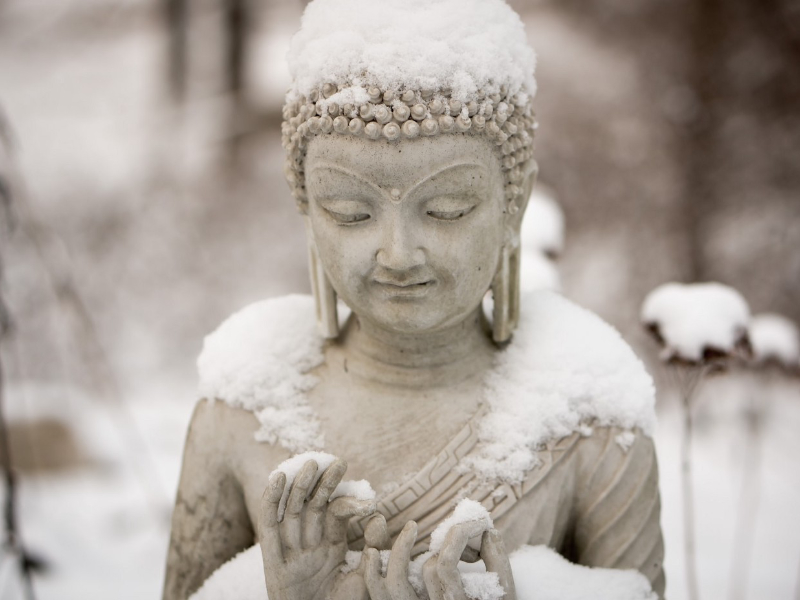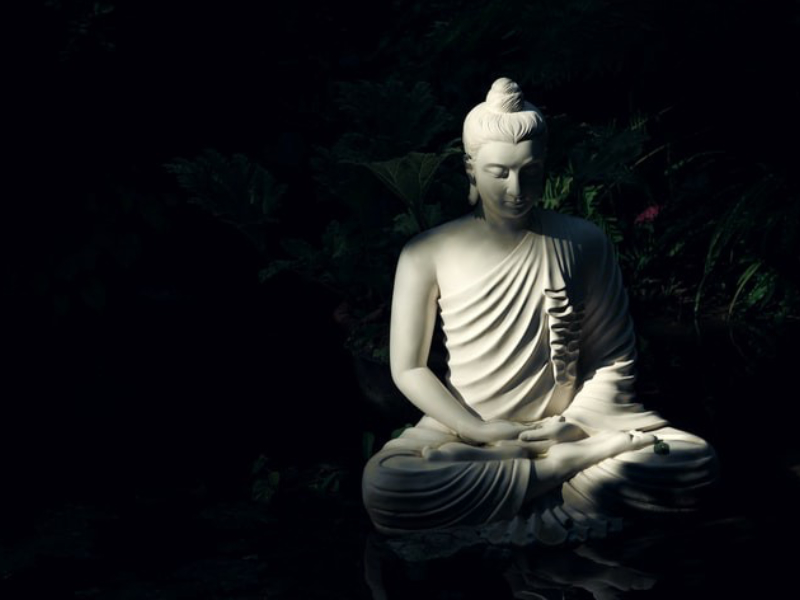Ardor & Clear Comprehension
– The often overlooked but indispensable companions on the path to Awakening –

In the Satipatthana Sutta, the Discourse on the Four Foundations of Mindfulness, from which all methods of vipassana — or insight meditation — stem, the Buddha lays out the direct path to Awakening:
“This is the direct path for the purification of beings, for the overcoming of sorrow and lamentation, for the disappearance of suffering and discontent, for the attainment of Nibbana, namely, the Four Satipatthanas [(or the Four Abidings)].”
Now, for those of us familiar with vipassana or the Satipatthana Sutta, we often think of the practice as that which cultivates ‘mindfulness.’ And we wouldn’t be wrong to think that. But when we look at the text, we see that the path to Awakening requires more:
“What is the direct path? One abides contemplating the body…feelings…mind…and dhammas, ardent, with clear comprehension, and mindful, free from desires and discontent.”
So, what else does the path require from us who seek freedom, liberation, the ultimate peace? First, there is the quality or mind state of ardor. What does this mean to abide contemplating our experience ardently?
Ardor or Ardency | Sustained Energy & Passion
Ardor, in this case, is a balanced and sustained application of energy to our practice. It carries a passion, enthusiasm, and warmth toward the object of contemplation. It is an appreciation of and connection with the value and importance of the experience in front of us, of what we’re sensing, feeling, thinking, saying, or doing in each moment.
So, when the Buddha says to contemplate experience ardently, he’s asking us to bring a passionate care to what’s happening, to maintain a continuity and perseverance with the present moment experience. Chinese Zen Master Xu Yun, who lived to be 120 years old, expressed this quality well as “the long enduring mind.”
How, then, can we strengthen this quality of ardency? One way is to reflect on the purpose of our practice. What are we doing, and why? When we reflect on and reconnect with our intention and motivation, we often naturally begin to be filled with this energy necessary to accomplish our aim. This ardor then allows us to abide through all the ups and downs, through all the trials that present themselves along the path.
Another way to cultivate or call forward ardor is to reflect on the brilliance, mystery, and preciousness of the mind. Experience is. Life is. That anything is, is utterly and inescapably wonderful and awe-inspiring. We need only take a moment to look at experience directly, without our prejudices and biases clouding the raw mystery of it, to suddenly be inspired with ardor by the magic that is.
We can also reflect on how rare an opportunity we have been given to practice the dhamma. When I consider all the causes and conditions that had to come into being to allow me to step into the dhamma and be able to practice it, I feel almost a sense of urgency, a duty, to particpate in its unfolding.
Finally, we can observe and contemplate the transience of everything, of all created things. We can contemplate and witness directly the truth of change, of impermanence, that the end of birth is death. This is your time to shine, to be the light of awareness. Don’t squander it.
* * *
Okay, so, the path to Awakening requires ardency. What else? It also requires clear comprehension. What does it mean to abide with clear comprehension?
Clear Comprehension | Investigation, Discernment, & Wisdom
Clear comprehension is our ability to clearly comprehend what it is that’s going on, what exactly we’re doing in each moment and why. It is to be considerate and thoughtful — holding steady the understanding in each moment of the selflesss, impermanent, and interconnected nature of all things. This quality, then, can be thought of as the investigation or wisdom factor of mind.
“When going forward and returning, one acts clearly knowing; when looking ahead and looking away, one acts clearly knowing; when bending or stretching, one acts clearly knowing; when one puts on clothes, one acts clearly knowing; when one eats, drinks, chews, savors, one acts clearly knowing; when one defecates and urinates, one acts clearly knowing; when one walks, stands, sits, sleeps, wakes, speaks, and keeps silent, one acts clearly knowing.” — The Buddha
This aspect of clear comprehension is vast. Whatever we’re doing, moment to moment, we need to abide clearly knowing, fully aware of what we’re doing and why we’re doing it. This is extremely important in our spiritual practice because it opens awareness to our intentions and motivations, without which we have no real moral freedom.
When we are open to our motivations, when we can see them clearly, only then can we choose before acting — is this wholesome or unwholesome; does it lead to more peace, happiness, and freedom or more suffering; is it skillful or unskillful; is it something worth doing or not? In making this decision, in doing this or saying that, am I seeing clearly the selfless, impermanent, and interconnected nature of all things?
This quality of clear comprehension, then, helps to cultivate and sustain an attitude, a posture, of caring attention toward the people and world around us. Instead of simply practicing the brahmavihārās, or the four divine abodes (loving-kindness, compassion, empathetic joy, and equanimity), this aspect of clear comprehension allows us to live the brahmavihārās, to relate to one another and the world around and within us with the feeling of love, compassion, joy, and equanimity.
This aspect of clear comprehension is important. It requires us to learn to see in each moment not only the relative level of reality, the level of thoughts and concepts, of selves and objects, but also the ultimate level of reality, the selfless, seamless, interconnected world of change. Clear comprehension asks us to carry this understanding of the ultimate level not just as a matter of theory, but to realize it directly, as a matter of experience, moment to moment. This is so important because it’s only when we experience this reality of constant change that we can become free from dukkha — free from suffering and discontent. And it is sampajanna – or clear comprehension – that enables us to do this.
Okay, so how can we practice it? First thing I’d suggest is to carve out a walking meditation into your daily routine. Make doing the dishes, folding the laundry, brushing your teeth, picking up your phone, reaching for the fridge, talking to your children—each a practice of meditation, where you see clearly what you are doing, where you see clearly both your intention and the motivation behind it.
Now, of course, we also need mindfulness, awareness, or bare attention, to help us become awake to all the elements of consciousness before we can hold each piece with sampajanna, with wisdom or full understanding. So, what is mindfulness, again?
Because this article was meant to highlight the two overlooked companions on the path to Awakening, I will not speak about mindfulness today. But, if you are interested, you can read about it here.
“Go forth for the good of the many, for the happiness of the many, out of compassion for the world, for the good benefit and happiness of all. Work for the good of others, those of you who have done your duties.” — The Buddha
John Driggs | Meditation Teacher & Founder of The Space of Possibility Podcast, Blog, & Retreat Center | Explore & Expand the Space of Possibility that You are!
More Articles
“The Art of Bare Attention”
Today we’re going to talk about the ancient Buddhist practice vipassana, or insight meditation. Now, just to be clear, this is an entirely secular practice. It doesn’t require you to adopt any dogmatic beliefs…
“The Faceless Seer”
How do you hold your love? Do you hold her from stillness, with nowhere to go, with nothing to do? How do you hold your love? Do you hold her with acceptance, with open hands and arms, with unabashed…
“Everything Changes”
It’s no secret everything changes. Your experience this morning isn’t your experience now. Yet how many of us act like we really understand this? How often do we grasp onto the illusion of things…
“The Divine Connection”
How do you hold your love? Do you hold her from stillness, with nowhere to go, with nothing to do? How do you hold your love? Do you hold her with acceptance, with open hands and arms, with unabashed…






